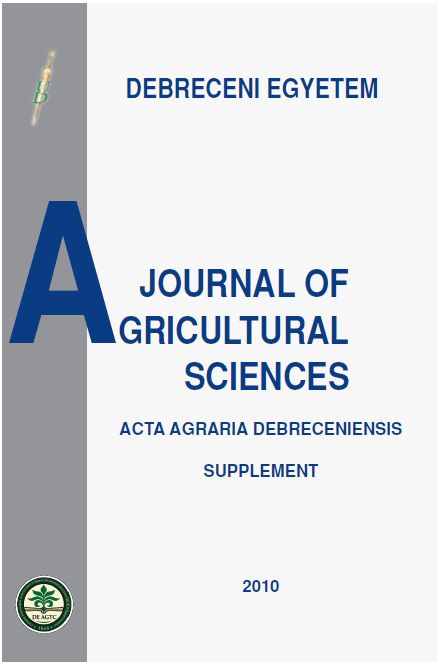Baking quality of winter wheat (Triticum aestivum L.) in the long-term experiments on chernozem soil
Author
View
Keywords
License

This work is licensed under a Creative Commons Attribution 4.0 International License.
How To Cite
Abstract
Agriculture has traditionally an important role in Hungarian economy and rural development. About 75 % of Hungary’s total territory
is under agricultural land use. Because of ecological conditions and production traditions cereals (wheat, maize etc) have the greatest
importance in Hungarian crop production. In the 1980’s the country-average yields of wheat were about 5,0-5,5 t ha-1 („industrial-like”
crop production-model). In the 1990’s the yields of wheat dropped to 4,0 t ha-1 because of low input-using and wide application of the issues
of environmental protection and sustainability. Winter wheat production for quality has a decisive role in certain regions of Hungary
(eastern and middle-parts).
The quality of wheat is complex and different. Three major growing factor groups determine the quality of winter wheat: genotype,
agroecological conditions and agrotechnical factors. In wheat production for quality the selection of the variety is the most important
element. Our long-term experiments proved that the quality traits of a variety means the highest (maximum) limit of quality which could not
be exceeded in fact. During the vegetation period of wheat the different ecological and agrotechnical factors could help or on the contrary
could demage the quality parameters of wheat.
The agrotechnical factors determining the baking quality of wheat can be divided into two groups: the first group means the factors with
direct effects on quality (fertilization, irrigation, harvest); the second group contains the elements with indirect effects on quality (crop
rotation, tillage, planting, crop protection).
Appropriate fertilization could help to manifest the maximum of quality parameters of a wheat genotype and could reduce the qualityfluctuation
in unfavourable ecological and agrotechnical conditions.

 https://doi.org/10.34101/ACTAAGRAR/I/8394
https://doi.org/10.34101/ACTAAGRAR/I/8394